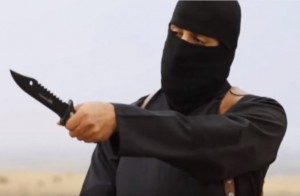For more than 30 years, a top secret US special operations intelligence unit known only as “the Activity” has been tracking down America’s enemies around the world for Delta or Seal Team Six to kill or capture, or more recently for drones to assassinate from afar with Hellfire missiles. Now President-Elect Donald Trump’s security advisers say they want the CIA to be more heavily involved in these operations, like reported by ibtimes.co.uk.
In an excerpt from the latest updated eBook of his history of the Activity, Killer Elite, Michael Smith describes its role in the fight against Islamic State in Syria and Iraq and how the CIA has already become increasingly involved with the work of America’s special operations forces.
It was just nine minutes to midnight on 12 November 2015 when Jihadi John hurried out of a building close to the headquarters of Islamic State in the northern Syrian city of Raqqa. He was getting out of the city, accompanied by a team of bodyguards. He knew he was a target for the US special operations forces who were ripping the terrorist group apart and he’d been spooked by the constant presence of American drones, whirring overhead. Jihadi John had made himself a hate figure in the West with beheadings of seven journalists and aid workers videoed and broadcast on the internet.
Now he was in hiding, never using his phone and never going near the internet. But even Jihadi John didn’t realise quite how much of a target he was. He had turned himself into the public face of Islamic State. US and British forces were more focused on finding him than they were on Abu Bakr al-Baghdadi, the organisation’s leader.
Even as he opened the door of the car, a Hellfire missile fired by an American Reaper drone several thousand feet above Raqqa was heading towards him at close to a thousand miles an hour. He had barely realised something was wrong before he was dead. The missile destroyed the car, leaving little evidence that Jihadi John and his friend had ever existed. The Pentagon said he had been “evaporated”. The Activity team tracking him preferred the term “smoked”. Ironically for a man who revelled in justifying the murder of his victims through a distorted interpretation of Sharia law, the series of missiles destroyed Jihadi John and his bodyguards on Clocktower Square, where Islamic State executed anyone who refused to bow to their brutal rule.
Until now, the operations to hunt down terrorists had been led by the Activity. But the brutal beheadings of foreign hostages had led to a manhunt involving virtually every US and British intelligence team available. The Activity was just one player in the race to find Jihadi John. The NSA and Britain’s GCHQ along with the FBI and Britain’s Security Service MI5 spent weeks trying to identify him, focusing primarily on voice recognition but also his skin colour, his height, physique, eyes and even the patterns of the veins on his hands.
By September 2014, MI5 was confident they had identified him. Jihadi John’s real name was Mohammed Emwazi. He was born in Kuwait but had been brought up in London and radicalised by fellow students while studying computer at Westminster College.
Identifying Emwazi was one thing. Finding him was another thing altogether. The CIA, Britain’s MI6 and the Activity worked together to find an agent inside Islamic State who could lead them to him. There was a lot of hard work done among the foreign fighters who had returned to Europe but eventually one was found who knew Emwazi personally and, in return for being given a new life away from the brutality of Islamic State, was prepared to help find him.
Once the agent had located him, the US spy satellites and the drones could put him under a “persistent stare”. That moment came in early November. The satellite homed in on a building sandwiched between the city’s Islamic Courts and the edge of Clocktower Square where the agent said Emwazi was spending the day and the drones — one of them British — took turns circling above Raqqa like hawks.
Everyone in the city knew they were up there from very early on. You could hear them even when you couldn’t see them. Some said there were three of them, others put the figure at five. It was why Emwazi stayed hidden in the building all day, hoping that once it was dark he could sneak away without being recognised.
There are those in the Activity who insist that the target always hears the missile a second or so before he dies. The drones’ cameras pick up a reaction, a sudden turn of the head or an attempt to run. For some of the families of Jihadi John’s victims that would have been a reassuring thought. They wanted him to know what was coming.



